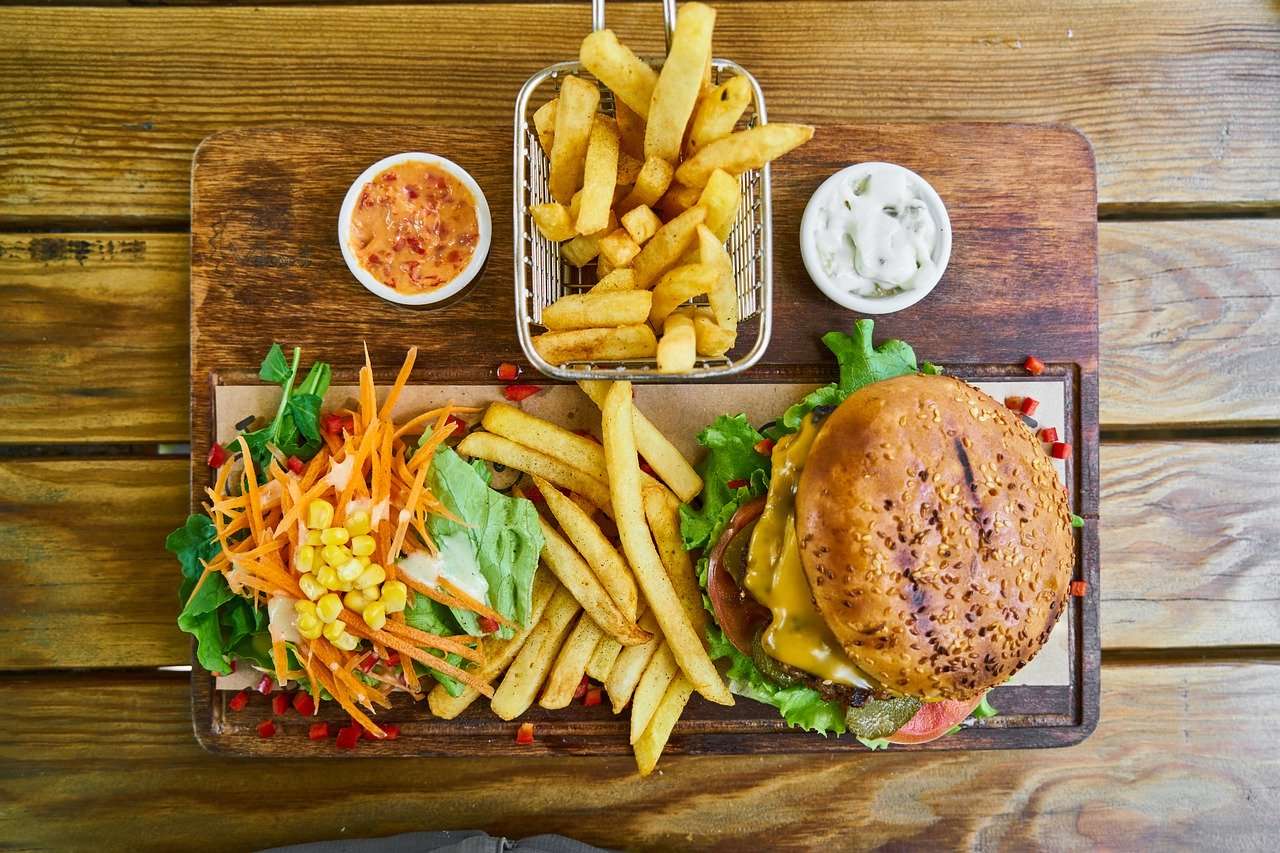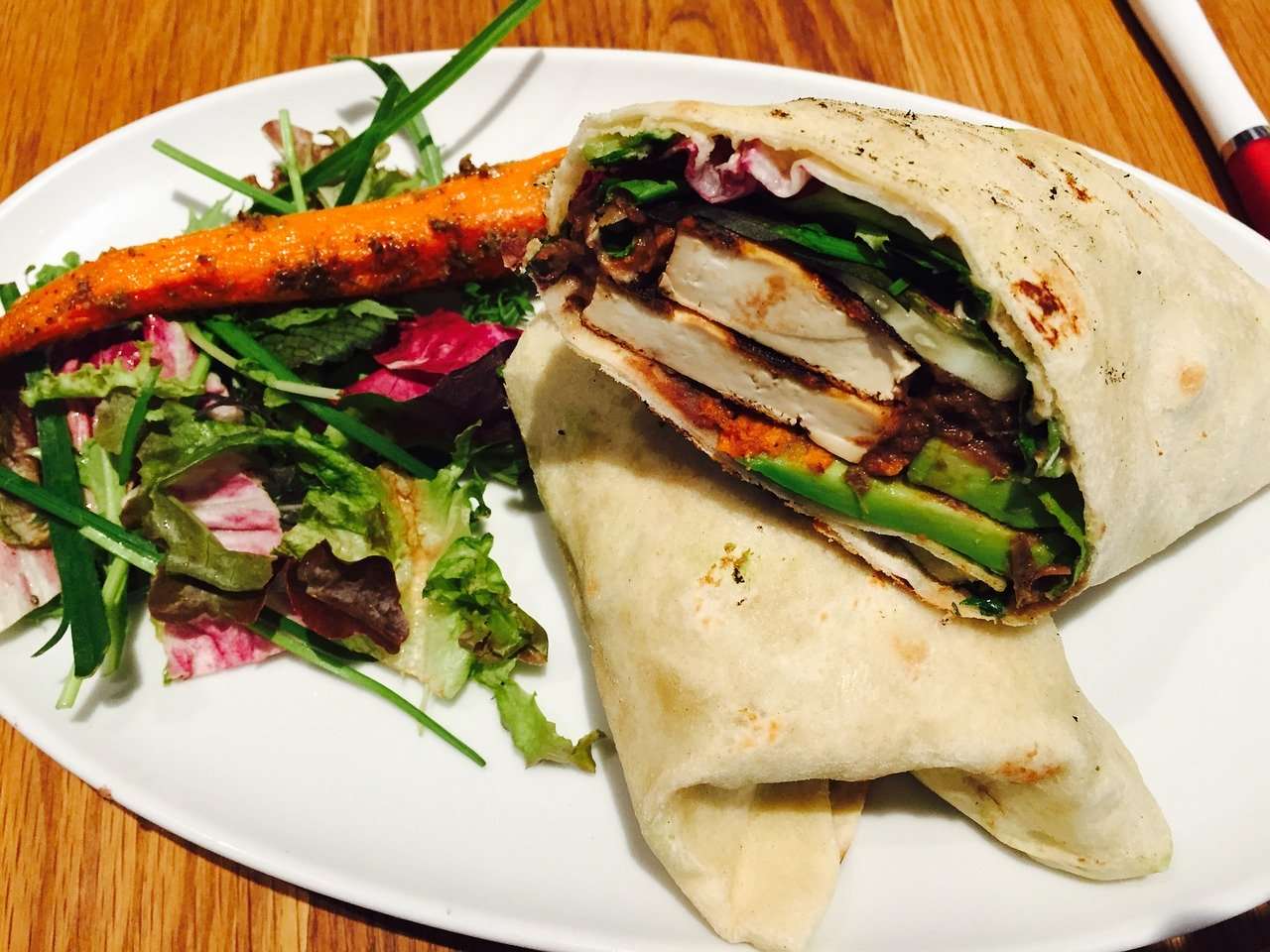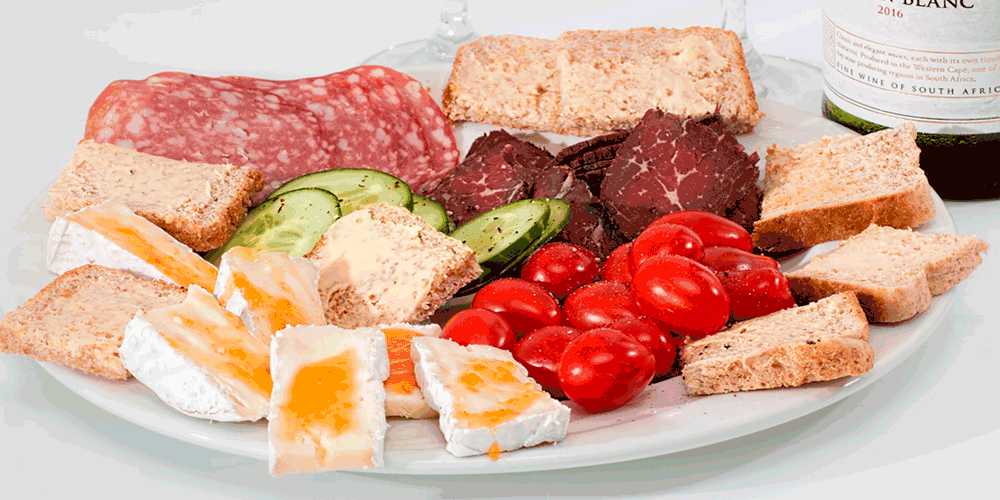Last Updated on October 11, 2024 by Alexander Sennuga
Type 2 diabetes diet matters so much to all diabetes-type-2 patients for 2 main reasons. First, it is no longer news that the disease is, to a very large extent, a diet disease. What this means is that it will take the adoption of the right diet to tackle the disease. Second, the patient would like to get better to avoid potential diabetes complications, anyway.
What are the complications of untreated diabetes? They are nerve damage (neuropathy), blindness, and nephropathy (kidney disease). They are irreversible, unfortunately. Neuropathy, for instance, can lead to a physical disability.
It is clear that if making the right choices of what to eat or drink can prevent complications, then it is worth it. Indeed, focusing on healthy eating and keeping it up can help on this journey.
This post will then share a lot of curated information about what type 2 diabetics should and should not eat. Of course, the doctor and/or registered dietitian must advise in matters like this.
Let’s dive in.
Diabetes Type 2 Diet
We will be discussing this all-important topic using these 5 main points. They will comprise 4 points on what to do and 1 point on what not to do.
1. Foods to Prevent Diabetes
Type 2 diabetes often starts with prediabetes. It is then okay to start to consider what foods to avoid or prevent prediabetes in the first place.
Foods to avoid with prediabetes

Prediabetes will, if not managed well, progress to type 2 diabetes. Is it your desire to avoid type 2 diabetes? Start right now to pay attention to what you eat. This is no longer the time for random eating, you have to make the right choices for healthy foods. A balanced diet with the right proportion of carbs, protein, and fat must be your goal. You can follow this guide.
You should also consider portion control by not consuming a large quantity of food at a time. Overeating will over-task the pancreas and the digestive system, leading to insulin resistance.
Foods to avoid with diabetes type 2

Any food that would cause a rapid spike in blood sugar when taken should be avoided. There are quite a large number of these foods, and surprisingly, it’s not only sugar. Some of them may be your favourite picks, so it might be necessary to take them less often. And, of course, a registered dietitian would be able to advise you as necessary. This list is exhaustive and enough as a helpful guide (1, 2).
Foods to Avoid or Limit for Diabetes Control
While certain foods can positively impact diabetes management, it’s equally important to be aware of foods that can hurt blood sugar levels. Here are some foods to avoid or limit in your diabetes diet:
High-sugar foods and beverages
- Sugary drinks: Sodas, fruit juices, energy drinks, and sweetened teas are loaded with added sugars and can cause rapid spikes in blood sugar. Choose water, unsweetened tea, or fortified water.
- Desserts and sweets: Cakes, cookies, pastries, candies, and other sugary treats should be consumed sparingly due to their high sugar content. Look for sugar-free or low-sugar alternatives if you have a sweet craving.
- Processed snacks: Snack foods like chips, crackers, and sweetened granola bars often contain hidden sugars. Read labels carefully and choose healthier options like unsalted nuts, seeds, or homemade snacks.
Refined carbohydrates
- White bread and pasta: These highly processed grains have had their fiber and nutrients stripped away, resulting in a rapid increase in blood sugar levels. Opt for whole-grain alternatives instead.
- White rice: Similar to white bread, white rice lacks fiber and causes blood sugar levels to rise quickly. Choose brown rice, wild rice, or cauliflower rice as healthier options.
- Sugary breakfast cereals: Many breakfast cereals are high in added sugars and lack fiber. Select cereals that are low in sugar and high in fiber, or consider options like oatmeal or muesli.
Saturated and trans fats
- Red meat: Limit the consumption of fatty cuts of beef, pork, and lamb, as they are high in saturated fats. Opt for leaner protein sources like poultry, fish, or plant-based proteins.
- Fried foods: Deep-fried foods like French fries, fried chicken, and fried snacks are high in unhealthy fats and calories. Choose baked, grilled, or steamed options instead.
- Processed meats: cold cuts, sausages, bacon, and hot dogs often contain high levels of sodium and unhealthy fats. Minimise intake or choose low-sodium and lean options.
Sodium-rich foods
- Canned soups and sauces: These products are notorious for their high sodium content, which can contribute to high blood pressure and increase the risk of cardiovascular complications. Opt for low-sodium or homemade alternatives.
- Processed meats: In addition to their fat content, processed meats like deli meats, bacon, and sausages can be high in sodium. Look for low-sodium versions or choose fresh, unprocessed meats.
- Fast food and packaged snacks: These convenient options often contain excessive amounts of sodium to enhance flavor and preserve the food. Try to limit fast food consumption and opt for whole, unprocessed foods.
By minimizing your consumption of these foods, you can help regulate blood sugar levels and reduce the risk of complications associated with diabetes. Remember to read food labels, practice portion control, and choose healthier alternatives whenever possible. Consulting with a healthcare professional or registered dietitian can provide further guidance tailored to your specific dietary needs.
2. Keto Diet and Type 2 Diabetes

The ketogenic diet we know has low carbs but high-fat content. What is the intended result of the keto diet in helping to control type 2 diabetes? It is thought that instead of sugar from carbs to supply energy for the body cells, the fat in the diet will do it. It was thought that the most important outcome would be weight loss. And so this diet became popular as a recipe for diabetes control.
But, recent studies have shown that the diet itself has a potential risk for type 2 diabetes (1, 2)! Given this development, scientists will have to do more research on it. Indeed, the current trial was on mice, so it is inconclusive yet until adequate trials are carried out on humans.
3. Plant-based Diet and Diabetes

A plant-based diet is composed primarily of nutritious plants like:
- fruits
- vegetables
- nuts
- legumes
- seeds
- whole grains
Compared to animal products that are full of fat, a plant-based diet is popular to help in the effective management of type 2 diabetes if done the right way. The diet can also reduce the risk of developing type 2 diabetes due to its antioxidants and fiber composition.
4. Low-carb diet and Diabetes

There are three reasons why diabetics, prediabetics, and even non-diabetics want to embrace a low-carb diet. These are:
- To lose weight (if necessary), and
- To drive down A1c (hemoglobin) – to help out type 2 diabetics
- To prevent developing type 2 diabetes if you are either prediabetic or diabetes-free
This is where a low-carb diet for diabetes comes in to achieve the above goals. What is a low-carb diet? It is a diet comprising mainly more vegetables and natural and real foods. But, it should contain less than 130 g of carbs. There is abundant information on diabetic recipes to guide diabetes patients and prediabetics. What it takes is strict adherence to eating low-carb foods and resisting the temptation to backslide.
Recommended Carbohydrate Intake
The recommended carbohydrate intake for individuals with diabetes may vary depending on factors such as age, weight, activity level, and medication regimen. However, a general guideline is to limit carbohydrate consumption to a range of 20 to 50 grammes per day for a low-carb diet.
By significantly reducing carbohydrate intake, you can minimise the fluctuations in blood sugar levels and improve overall glycemic control. It is important to note that this range may not be suitable for everyone, and individualised guidance from a healthcare professional or registered dietitian is recommended.
Carbohydrates should primarily come from non-starchy vegetables, such as leafy greens, broccoli, cauliflower, and peppers. These vegetables are low in carbohydrates and high in fiber, which helps slow down the absorption of glucose and prevents sharp spikes in blood sugar levels.
Foods high in refined carbohydrates, such as white bread, pasta, sugary snacks, and sodas, should be avoided or consumed in very limited quantities.
Diabetes Type 2 Diet Plan Meals
The ideal diabetes meal plan will offer menus for three meals a day, plus snacks.
The two 7-day meal plans below, based on 1,200 and 1,600 calories per day, provide a maximum of 3 servings of healthful, high-fiber carbohydrate choices at each meal or snack.
1,200 calorie plan
Monday
Breakfast: One poached egg and half a small avocado spread on one slice of Ezekiel bread, one orange. Total carbs: Approximately 39
Lunch: Mexican bowl: two-thirds of a cup low-sodium canned pinto beans, 1 cup chopped spinach, a quarter cup chopped tomatoes, a quarter cup bell peppers, 1 ounce (oz) cheese, and 1 tablespoon (tbsp) salsa as a sauce. Total carbs: approximately 30.
Snack: 20 1-gram baby carrots with 2 tbsp. hummus. Total carbs: approximately 21.
Dinner: 1 cup cooked lentil penne pasta, 1.5 cups veggie tomato sauce (cook garlic, mushrooms, greens, zucchini, and eggplant into it), 2 oz ground lean turkey. Total carbs: approximately 35.
Total carbs for the day: 125.
Tuesday
Breakfast: 1 cup (100g) cooked oatmeal, three-quarters of a cup of blueberries, 1 ounce of almonds, and 1 teaspoon (tsp) chia seeds. Total carbs: Approximately 34
Lunch: Salad: 2 cups fresh spinach, 2 oz grilled chicken breast, half a cup chickpeas, half a small avocado, half-cup sliced strawberries, one-quarter cup shredded carrots, and 2 tbsp dressing. Total carbs: approximately 52.
Snack: One small peach diced into a one-third cup of 2% cottage cheese. Total carbs: approximately 16.
Dinner: Mediterranean couscous: two-thirds cup whole wheat cooked couscous, half a cup sautéed eggplant, four sundried tomatoes, five jumbo olives chopped, half a diced cucumber, 1 tbsp balsamic vinegar, and fresh basil. Total carbs: approximately 38.
Total carbs for the day: approximately 140.
Wednesday
Breakfast: two-egg veggie omelet (spinach, mushrooms, bell pepper, avocado) with a half cup of black beans, and three-quarters cup of blueberries. Total carbs: approximately 34.
Lunch: Sandwich: two regular slices of high-fiber whole grain bread, 1 tbsp plain, no-fat Greek yogurt and 1 tbsp mustard, 2 oz canned tuna in water mixed with a quarter cup of shredded carrots, 1 tbsp dill relish, 1 cup sliced tomato, half a medium apple. Total carbs: approximately 40.
Snack: 1 cup unsweetened kefir. Total carbs: approximately 12.
Dinner: half a cup (50g) succotash, 1 tsp butter, 2 oz pork tenderloin, 1 cup cooked asparagus, and half a cup fresh pineapple. Total carbs: approximately 34.
Total carbs for the day: approximately 120.
Thursday
Breakfast: Sweet potato toast: two slices (100 g) toasted sweet potato, topped with 1 oz goat cheese, spinach, and 1 tsp sprinkled flaxseed. Total carbs: approximately 44.
Lunch: 2 oz. roast chicken, 1 cup raw cauliflower, 1 tablespoon low-fat French dressing, and 1 cup fresh strawberries. Total carbs: approximately 23.
Snack: 1 cup low-fat plain Greek yogurt mixed with half a small banana. Total carbs: approximately 15.
Dinner: A two-thirds cup of quinoa, 8 oz silken tofu, 1 cup cooked bok choy, 1 cup steamed broccoli, 2 tsp olive oil, and one kiwi. Total carbs: approximately 44.
Total carbs for the day: approximately 126.
Friday
Breakfast: A one-third cup of Grape-Nuts (or similar high-fiber cereal), half a cup of blueberries, and 1 cup of unsweetened almond milk. Total carbs: approximately 41.
Lunch: Salad: 2 cups spinach, a quarter cup tomatoes, 1 oz cheddar cheese, one boiled chopped egg, 2 tbsp yogurt dressing, a quarter cup grapes, 1 tsp pumpkin seeds, 2 oz roasted chickpeas. Total carbs: Approximately 47.
Snack: 1 cup celery with 1 tbsp peanut butter. Total carbs: approximately 6.
Dinner: 2 oz salmon filet, one medium baked potato, 1 tbsp butter, 1.5 cups steamed asparagus. Total carbs: Approximately 39.
Total carbs for the day: Approximately 133.
Saturday
Breakfast: 1 cup low-fat plain Greek yogurt sweetened with half a banana mashed, 1 cup strawberries, and 1 tablespoon chia seeds. Total carbs: approximately 32.
Lunch: Tacos: two corn tortillas, a one-third cup cooked black beans, 1 oz low-fat cheese, 2 tbsp avocado, 1 cup coleslaw, salsa as dressing. Total carbs: Approximately 70.
Snack: One cherry tomato and 10 baby carrots with 2 tbsp hummus. Total carbs: Approximately 14.
Dinner: half medium baked potato with skin, 2 oz broiled beef, 1 tbsp butter, 1.5 cups steamed broccoli with 1 tbsp nutritional yeast sprinkled on top, and three-quarters cup whole strawberries. Total carbs: approximately 41.
Total carbs for the day: approximately 157.
Sunday
Breakfast: Chocolate peanut oatmeal: 1 cup cooked oatmeal, 1 scoop chocolate vegan or whey protein powder, 1 tbsp peanut butter, 1 tbsp chia seeds. Total carbs: approximately 21.
Lunch: One small whole-wheat pita pocket, half a cup of cucumber, half a cup of tomatoes, half a cup of lentils, half a cup of leafy greens, and 2 tablespoons of salad dressing. Total carbs: approximately 30.
Snack: 1 oz. almonds, one small grapefruit. Total carbs: approximately 26.
Dinner: 2 oz boiled shrimp, 1 cup green peas, 1 tsp butter, half a cup cooked beets, 1 cup sauteed Swiss chard, and 1 tsp balsamic vinegar. Total carbs: approximately 39.
Total carbs for the day: approximately 116.
[Source: medicalnewstoday.com]
Tips for a Balanced Diabetes Diet

Maintaining a balanced diabetes diet goes beyond knowing what foods to eat and avoid. Here are some additional tips to help you make informed choices and achieve optimal blood sugar control:
Portion control
- Understand serving sizes: familiarise yourself with standard serving sizes to avoid overeating. Use measuring cups or a food scale when necessary to ensure accurate portioning.
- Fill your plate wisely: Aim to fill half of your plate with non-starchy vegetables, one-quarter with lean protein, and one-quarter with whole grains or starchy vegetables. This helps create a balanced meal and control carbohydrate intake.
- Be mindful of calorie-dense foods: Foods high in fat and sugar can be calorie-dense, so portion them out carefully to avoid excess calorie consumption.
Regular Meal Timing
- Stick to a routine: Establish consistent meal times and try to maintain a regular eating schedule. This can help regulate blood sugar levels and prevent spikes or drops.
- Avoid skipping meals: Skipping meals can lead to unstable blood sugar levels and overeating later. Aim to have three balanced meals and, if needed, incorporate healthy snacks in between.
- Plan: Plan your meals and snacks to ensure you have diabetes-friendly options available, especially when you’re on the go.
Monitoring Carbohydrate Intake
- Count carbohydrates: If you’re on a carbohydrate-counting meal plan, learn how to estimate the carbohydrate content of different foods. This can help you determine appropriate portion sizes and adjust your insulin or medication accordingly.
- Choose complex carbohydrates: Opt for whole grains, legumes, and fibrous vegetables, as they provide a steady release of glucose into the bloodstream, preventing rapid blood sugar spikes.
- Be mindful of added sugars: Read food labels to identify hidden sources of added sugars, such as in sauces, condiments, and packaged foods. Minimise or avoid foods with a high sugar content.
Incorporating Physical Activity
- Consult your healthcare team: Speak with your healthcare provider before starting or modifying any exercise routine to ensure it aligns with your individual needs and abilities.
- Find activities you enjoy: Engage in physical activities that you enjoy, such as walking, cycling, swimming, or dancing. Regular exercise can help improve insulin sensitivity and manage weight.
- Aim for consistency: Strive for at least 150 minutes of moderate-intensity aerobic activity per week, along with strength training exercises. Break it down into manageable sessions throughout the week.
By practicing portion control, maintaining regular meal times, monitoring carbohydrates, and incorporating physical activity, you can enhance the effectiveness of your diabetes management plan. Remember, it’s essential to work closely with your healthcare team to develop an individualized approach that suits your specific needs and goals.
Conclusion
Adopting a balanced and well-planned diet is a crucial aspect of managing diabetes effectively. By understanding which foods to include and avoid, you can take control of your blood sugar levels, reduce the risk of complications, and improve your overall well-being.
In this article, we have provided you with the ultimate list of foods to eat and avoid for better diabetes management. High-fiber foods, lean proteins, healthy fats, and low-glycemic index foods are excellent choices to incorporate into your diet. Conversely, it’s important to limit or avoid high-sugar foods and beverages, refined carbohydrates, saturated and trans fats, and sodium-rich foods.
In addition to making wise food choices, portion control, regular meal timing, carbohydrate monitoring, and physical activity play essential roles in maintaining stable blood sugar levels and achieving optimal health outcomes. By practicing these tips, you can create a well-rounded diabetes diet that suits your needs and preferences.
It is crucial to remember that everyone’s nutritional requirements may vary, and consulting with a healthcare professional or registered dietitian is highly recommended. They can provide personalised guidance, help create a tailored meal plan, and address any specific concerns or considerations you may have.
Committing to a healthy diabetes diet is a lifelong journey, but the benefits are well worth it. By prioritising nutritious foods, mindful eating habits, and regular physical activity, you can take charge of your diabetes management and enjoy a vibrant, fulfilling life. Remember, small steps today can lead to significant improvements tomorrow. So, embrace a diabetes-friendly diet and empower yourself to thrive with optimal health and well-being.
FAQ
**Q: What is a Diabetes Type 2 Diet?**
A: A diabetes type 2 diet refers to a meal plan designed specifically for individuals with type 2 diabetes. It focuses on consuming nutritious foods that help manage blood sugar levels and maintain overall health.
**Q: What are the key goals of a Diabetes Type 2 Diet?**
A: The primary goals of a diabetes type 2 diet are to regulate blood sugar levels, achieve and maintain healthy body weight, control blood pressure, and cholesterol levels, and reduce the risk of complications associated with diabetes.
**Q: What should I include in a Diabetes Type 2 Diet?**
A: A diabetes type 2 diet should include a variety of nutrient-rich foods such as fresh fruits and vegetables, whole grains, lean proteins, and healthy fats. It’s important to limit the intake of sugary foods, processed snacks, and beverages high in added sugars.
**Q: Are carbohydrates allowed in a Diabetes Type 2 Diet?**
A: Yes, carbohydrates are allowed in a diabetes type 2 diet. However, it is essential to choose complex carbohydrates like whole grains, legumes, and vegetables, as they have a lower impact on blood sugar levels compared to refined carbohydrates.
**Q: How can protein benefit a Diabetes Type 2 Diet?**
A: Protein plays a crucial role in a diabetes type 2 diet. It helps promote satiety, stabilise blood sugar levels, and support muscle health. Incorporating lean protein sources such as poultry, fish, tofu, and beans can be beneficial.
**Q: Can fats be a part of a Diabetes Type 2 Diet?**
A: Yes, healthy fats should be included in a diabetes type 2 diet. Unsaturated fats found in foods like avocados, nuts, seeds, and olive oil can help improve heart health and provide essential nutrients.
**Q: Is it important to control portion sizes in a Diabetes Type 2 Diet?**
A: Yes, portion control is crucial in a diabetes type 2 diet. Monitoring portion sizes helps manage calorie intake, maintain a healthy weight, and regulate blood sugar levels. It is recommended to work with a registered dietitian to determine appropriate portion sizes.
**Q: Can I consume sweets or desserts in a Diabetes Type 2 Diet?**
A: Occasional consumption of sweets or desserts is possible in a diabetes type 2 diet. However, it’s important to choose healthier alternatives like fresh fruits, sugar-free options, or small portions of sweet treats while considering their impact on blood sugar levels.
**Q: Should I avoid all sugar in a Diabetes Type 2 Diet?**
A: While it’s not necessary to completely avoid sugar in a Diabetes Type 2 Diet, it is crucial to limit the intake of added sugars. Instead of sugary beverages and sweets, opt for naturally occurring sugars found in fruits and avoid excessive consumption.
**Q: Can physical activity complement a Diabetes Type 2 Diet?**
A: Absolutely! Regular physical activity is highly recommended as part of a Diabetes Type 2 Diet. It helps improve insulin sensitivity, manage weight, lower blood sugar levels, and enhance overall cardiovascular health.
Remember, consulting with a healthcare professional or a registered dietitian is essential to create a personalized Diabetes Type 2 Diet plan that suits your specific needs and health condition.
What other strategies concerning diabetes diet do you know?
Please share them in the comments section.
Very Important: PLEASE note that all information we provide on this site is for educational purposes only. They are not for medical advice, diagnosis, or treatment. So, please consult with your doctor and/or registered dietitian or nutritionist for any professional advice. Do this before applying any of the information on your health issues.


Heavily fake misleading confusing information adding to frustration of the patients of T2D!!! Type 2 diabetes can be cured through low-carb animal-based protein rich food combined with intermittent fasting. THAT`S IT! Please see here. https://www.dietdoctor.com/
https://www.doctorjasonfung.com/
Hi, Mori. Thanks for your comment! A cure is often used in place of reversal. Never mind, your point is noted. Cheers